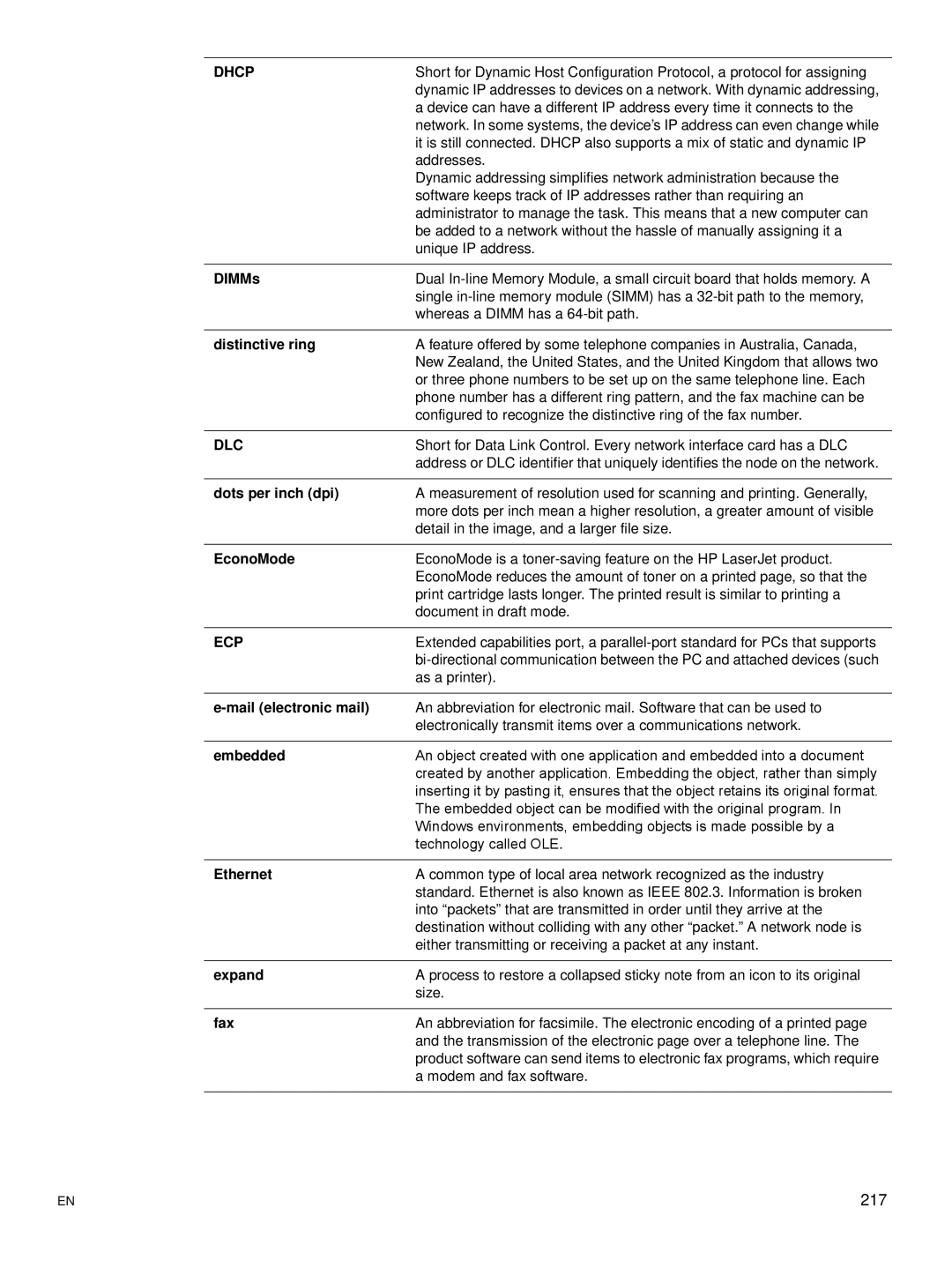DHCP | Short for Dynamic Host Configuration Protocol, a protocol for assigning |
| dynamic IP addresses to devices on a network. With dynamic addressing, |
| a device can have a different IP address every time it connects to the |
| network. In some systems, the device’s IP address can even change while |
| it is still connected. DHCP also supports a mix of static and dynamic IP |
| addresses. |
| Dynamic addressing simplifies network administration because the |
| software keeps track of IP addresses rather than requiring an |
| administrator to manage the task. This means that a new computer can |
| be added to a network without the hassle of manually assigning it a |
| unique IP address. |
|
|
DIMMs | Dual |
| single |
| whereas a DIMM has a |
|
|
distinctive ring | A feature offered by some telephone companies in Australia, Canada, |
| New Zealand, the United States, and the United Kingdom that allows two |
| or three phone numbers to be set up on the same telephone line. Each |
| phone number has a different ring pattern, and the fax machine can be |
| configured to recognize the distinctive ring of the fax number. |
|
|
DLC | Short for Data Link Control. Every network interface card has a DLC |
| address or DLC identifier that uniquely identifies the node on the network. |
|
|
dots per inch (dpi) | A measurement of resolution used for scanning and printing. Generally, |
| more dots per inch mean a higher resolution, a greater amount of visible |
| detail in the image, and a larger file size. |
|
|
EconoMode | EconoMode is a |
| EconoMode reduces the amount of toner on a printed page, so that the |
| print cartridge lasts longer. The printed result is similar to printing a |
| document in draft mode. |
|
|
ECP | Extended capabilities port, a |
| |
| as a printer). |
|
|
| An abbreviation for electronic mail. Software that can be used to |
| electronically transmit items over a communications network. |
|
|
embedded | An object created with one application and embedded into a document |
| created by another application. Embedding the object, rather than simply |
| inserting it by pasting it, ensures that the object retains its original format. |
| The embedded object can be modified with the original program. In |
| Windows environments, embedding objects is made possible by a |
| technology called OLE. |
|
|
Ethernet | A common type of local area network recognized as the industry |
| standard. Ethernet is also known as IEEE 802.3. Information is broken |
| into “packets” that are transmitted in order until they arrive at the |
| destination without colliding with any other “packet.” A network node is |
| either transmitting or receiving a packet at any instant. |
|
|
expand | A process to restore a collapsed sticky note from an icon to its original |
| size. |
|
|
fax | An abbreviation for facsimile. The electronic encoding of a printed page |
| and the transmission of the electronic page over a telephone line. The |
| product software can send items to electronic fax programs, which require |
| a modem and fax software. |
|
|
EN | 217 |
